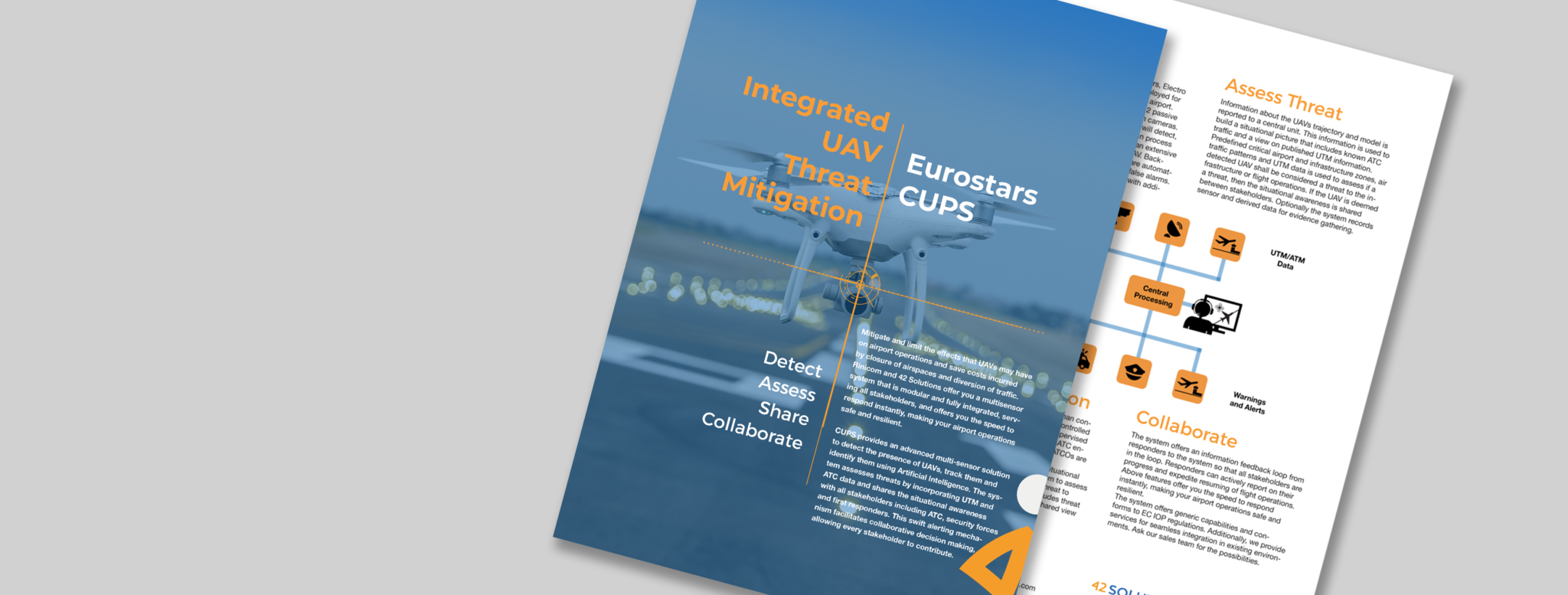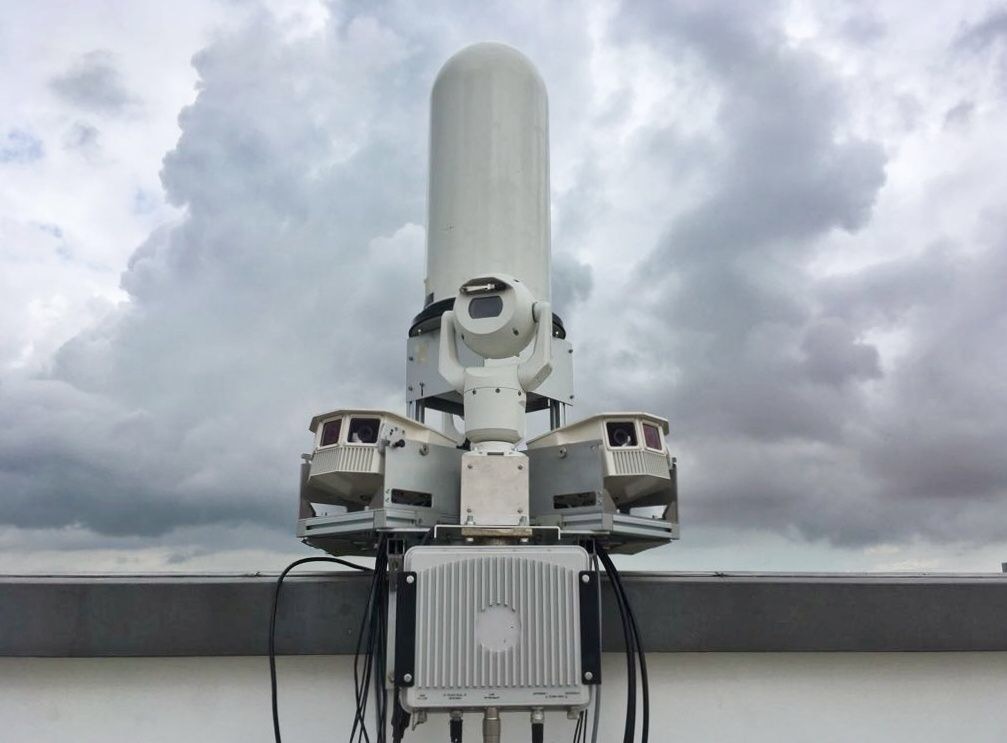
Counter-UAV Protection System for Airports
The Most Advanced Integrated Drone Detection and ATM System for Airports
CUPS is a collaborative project between Rinicom and 42 Solution in the Netherlands. The project, partly funded by the Eurostars programme, is developing the first fully-integrated drone detection and Situational Awareness Air Traffic Management (SA-ATM) system designed to provide early detection and rapid response against illegal drones and UAVs.
The high-performance CUPS system will deliver a unique value proposition with the inclusion of the leading-edge AI-powered SkyPatriot electro-optical drone detection system developed by Rinicom and the Situational Awareness ATM visualisation platform developed by 42 Solutions, which will provide real-time information and threat assessments to airport security regarding any detected drones.
The detailed information delivered from the detection module directly into the SA-ATM system includes continuous position, relative distance, altitude, azimuth, and trajectory of any detected drones, which enables the air traffic managers to disseminate the information much faster and wider leading to a more rapid response to incidents. It will even be possible to send warning information directly to incoming airplanes to ensure they can take any necessary precautions during a drone attack on the airport.


The Benefits of CUPS
AUTOMATIC detection of multiple drones simultaneously
LONG RANGE detection distances of several kilometres
RELIABLE 98% detection, tracking and classification accuracy
SA-ATM visualisation and incident management
THREAT assessment of on-going incidents
DISSEMINATION of real-time threat information to ATC

Download the
CUPS brochure
here
Case Study
The 2018 Gatwick Airport Incident
As has been widely reported in the media, Gatwick Airport was the target of a series of malicious drone attacks in late December 2018. The incident started with reports of drone sightings close to the runway, which forced the airport to immediately close the runway for safety reason. This naturally caused major disruption for more than one hundred thousand passengers as close to 1,000 flights were cancelled or diverted away to other airports. The situation continued to escalate over three days as whenever the runway was about to re-open, new drone sightings were reported forcing the airport to keep the runway closed.
However, when police and later the military investigated the reported sightings, no trace of any drones were found. In total, 92 sightings were reported, but no video or pictures of any drones were captured by airport security or handed over to the police from the public. Gatwick Airport covers an area of 6.74 square kilometres, so it took airport security and local police some time to attend to each location of the drone sighting reported, especially since the exact locations of the sightings were not known. The security and police forces spent a lot of time chasing the suspected drones around the airport, which is not only a waste of time and resources, but also reduces the number of regular tasks and assignments that they could undertake to protect passengers and buildings. The lack of a precise, verifiable location of the drone sightings led to a prolonged delay in re-opening the runway as it was necessary to confirm the status of each drone sighting before the area could be declared safe. Sussex police later admitted that 'contradictory statements and reports from police and security officers amplified the chaos caused by the drone invasion.
Source: BBC and The Guardian

The Use Case for CUPS
Preventing future drone invasions at airports
With the combination of automatic long-range detection, tracking, and classification of drones in real-time and the Situational Awareness threat assessment capability, CUPS is designed to prevent drone invasion incidents like in Gatwick Airport by providing early detection and continuous tracking and classification of multiple UAVs and drones if needed. The precise location and trajectory of the detected drone is continuously disseminated in real-time to the airport control tower, airport security, and local law enforcement responding to the incident. This prevents the situation from Gatwick where the drone or drones had disappeared when the police arrived to investigate. CUPS provides up-to-date location and trajectory information as the response team closes in on the position of the drone allowing the response to be coordinated adjusted appropriately and the incident to be resolved much quicker.
The evidence gathering feature of CUPS also ensures that video, images, and telemetry data evidence are recorded to prevent wild goose chases. The intelligent classification algorithm can even identify the specific make and model of some drones allowing authorities to make decisions based on high-quality evidence to ensure that the appropriate response is deployed in each incident.

SkyPatriot drone detection interface showing a drone detected at approx. 800m

Example of a Situational Awareness map with a restricted zone marked in red
Key Features
- Passive high-definition Detection Cameras search for drone signatures 24/7
- Powerful pan/tilt/zoom camera tracks and classifies detected drones
- Extensive database of drone signatures and profiles for accurate identification and classification
- Automatic recording of video, images, and telemetry data evidence of all detected drones
- Situational Awareness ATM integration facilities fast dissemination of information during any incidents
- Scalable design suitable for multiple operational environments - Covert and overt


